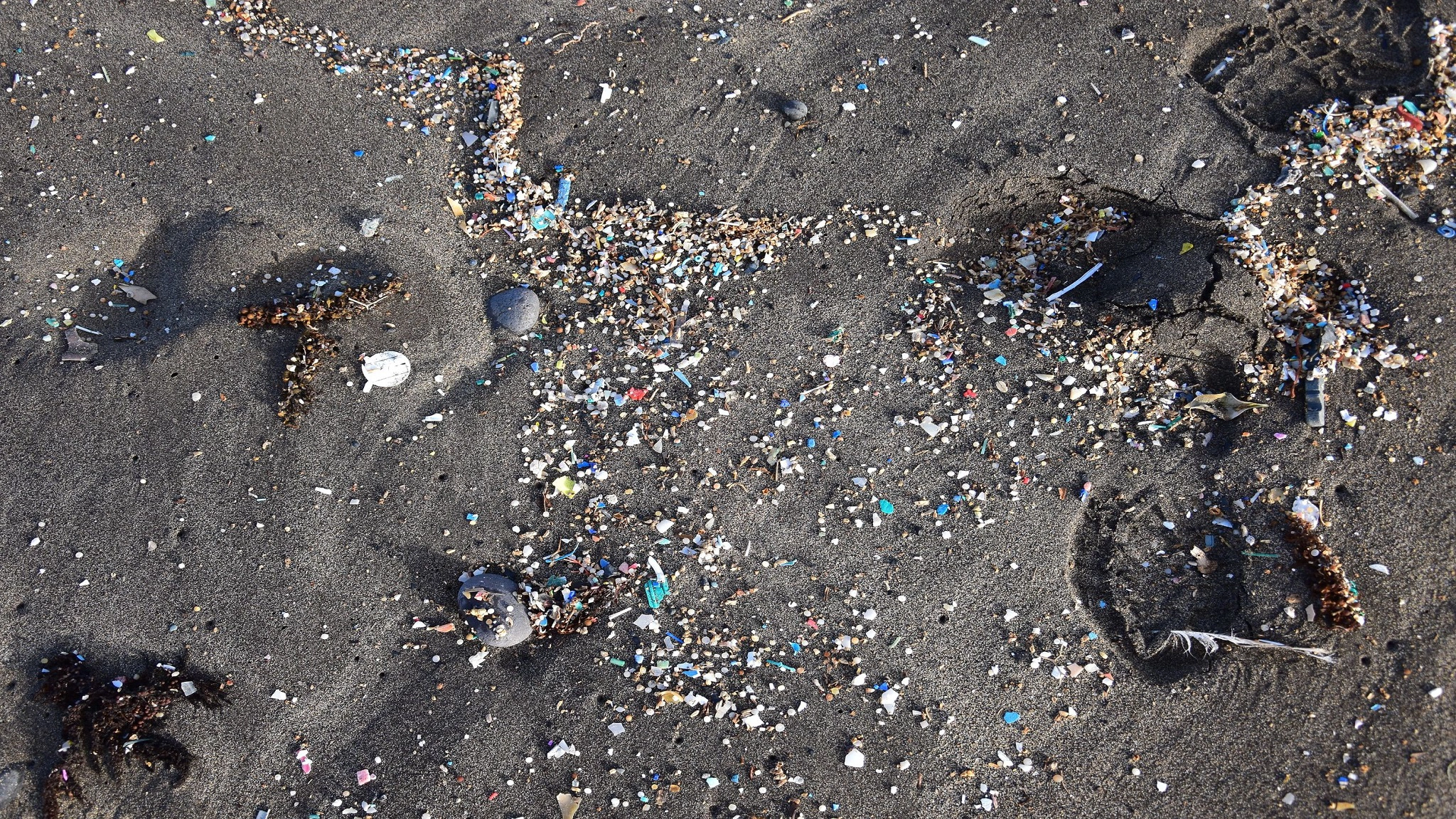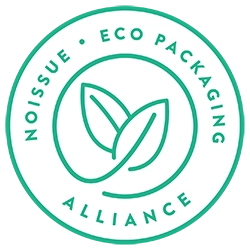Buy edible straws for a microplastic-free future

So, our straws are eco-friendly and feel great to use. Do you still need another reason to buy edible straws from us? Then here’s one: They are completely plastic and microplastic-free.
Flewid Friendly is an eco-friendly brand that makes straws that you can eat. Not only is it an interesting and enjoyable concept, but it also means you’re contributing less to our all too severe plastic problem. And when we’re discussing the plastic problem, it’s important to mention microplastics – which account for a small percentage of the total plastic waste, but which cause a lot of problems to make up for it.
In today’s blog, we want to discuss microplastics – the what, why and how of them, and then talk about our straws and why we’re sure they won’t add to the burden of microplastics our planet currently bears.
What are microplastics?
Microplastics is a term used to define pieces of plastic less than 5 mm in size. They range in size from a couple millimeters to being small enough to remain suspended in the air. They’re born when plastic degrades and breaks up into smaller pieces due to environmental forces. Beauty products, plastic-containing textiles, industrial processes, and vehicle tires are among the biggest culprits.
A term often used as a substitute for microplastic is ‘microbead’. It isn’t necessarily synonymous to microplastic. The thing is, while all microbeads are microplastics, not all microplastics are microbeads. In other words, microbeads are a type of microplastic. More on them later.
If you want to prevent your plastic straws from disintegrating into microplastic and harming our environment, buy edible straws today! They are completely eco-friendly and ocean-friendly, and will biodegrade long before they reach our marine creatures.
What are microbeads used in, and why?
Microbeads are often used in beauty and cleaning products. Popular examples include scrubs, toothpaste and detergents. The terms used to mention them may vary widely, but the use of microbeads is usually mentioned, because they are thought to have powerful cleansing properties.
Another reason why microbeads are used is because plastic is cheap, and microbeads provide a cheap way to add filler to the cleaning product. A lot of the time, microbeads are just cheap filler material.
Unfortunately, microbeads used in dental products can lodge under the gum and cause gum issues such as gingivitis. Used in skin products, it can cause irritation and sensitivity. This is quite apart from the environmental consequences of microplastics, which we’ll discuss in the next section.
Beauty and skincare companies are now beginning to realize their mistake and are taking action. You’ll see fewer products using microbeads, and you should be able to find products that proudly state that they don’t use microbeads. However, when nothing is mentioned, you should usually assume the worst.
The difference between microplastics and microbeads
The two terms are quite different, despite the fact that they’re used synonymously. One major difference is the fact that microbeads are a type of microplastic. Secondly, they are generated in different ways. While microplastics are a result of the breakdown of plastic, microbeads are actually manufactured for use in cleaning products.
Thirdly, you won’t usually find microplastics in household products, but you may find microbeads in them. Some amount of microplastics may be present because they’re suspended in air and water, but microbeads are purposely included in certain products, and are present in quite a high concentration.
Lastly, one difference between the two is that while microplastics are created inadvertently, microbeads actually serve a purpose. They serve as bulking agents or abrasives, and help brands cut costs while improving their product quality in certain ways.
How microplastics harm us
Microplastics harm us in a variety of ways. Those suspended in the air are breathed in by us, and can cause respiratory issues, cardiovascular issues, and even cancer. Researchers found that the level of microplastics in the air is usually higher inside homes, so that means we’re breathing in plastic-laden air.
Another, somewhat obvious, way is that it adds to our plastic pollution burden. We have more plastic to deal with, there’s more plastic harming our marine wildlife, and our pristine beaches and oceans have so much more plastic dumped on to them.
The third way in which microplastics harm us is by entering our water supply. The smaller parties can’t be seen, and therefore get consumed by us through water. They then go on to cause a variety of problems. Basically, we get a taste of our own bitter medicine.
Our body isn’t able to get rid of small pieces of microplastic, so the particles which enter our body and our bloodstream stay in there for potentially forever. Infants that crawl on the ground are especially susceptible to ingesting (or inhaling) microplastics. Children also breathe more rapidly, which means they can breathe in more microplastics.
How to avoid microplastics
Since microplastics harm us in so many ways, it’s important to reduce their spread. One way in which you can do it is if you buy edible straws instead of plastic straws. However, a more general answer would be to just reduce your use of plastic, and to educate others about this subject so they do, too.
You need to start the process by educating yourself. Removing plastic from your life isn’t as simple as getting rid of a couple plastic items. Plastic is so enmeshed in our culture that it shows up just about everywhere – in dental products, beauty products, packaging, clothing, furniture, children’s toys, carpets… You can’t imagine all the things plastic is used in!
So, educate yourself on the subject, and then begin the crusade against plastic by slowly removing one item at a time from your life. It isn’t enough to impulse buy lots of edible straws or a reusable cup. You need to tackle the root of the problem, address bad habits, and then implement solutions that’ll work.
Once you become plastic-free, it’s time to educate others – because remember, you’ll minimize the amount of microplastics in your home by reducing your plastic use, but if your friends and neighbors still use it every day, you’ll still be surrounded by microplastics.
Buy edible straws and say no to microplastics
Our edible straws contain no plastic – not in the packaging, and certainly not in the product. Our packaging is simple cardboard, and the product itself is made with rice flour and cassava flour. The straws are safe for you, your kids, and your pets to eat. Our edible straws are also safe for pregnant and nursing women, and they’re BPA-free and non-GMO. The straws are gluten-free as well, and okay for vegans. Basically, just about anyone can consume these straws, once they’re cooked properly.
Now let’s talk a little about how these straws should be used.
Our edible straws are easy to use. Just open the packet, pull out a straw, and place it in a drink and use as normal. After using it, you can put the straw into your next meal, where it’ll act as a noodle. If your meal doesn’t allow for noodles, just boil the straw separately and eat it, or you can feed it to your pet, or even to the local bird population! They’ll soon become your friends.
About Flewid Friendly
We are an environmentally-friendly company that wants to do something about the existing plastic problem, and about the many other issues facing humanity. We’ve started our crusade against plastic with our biodegradable edible straws, which you can buy online. Using just two straws per day will get you to a thousand straws in a year and a half, which is a huge number! It means you’ll save a thousand plastic straws from entering our landfills and oceans.
We encourage you to use these straws, and to spread the word – not for our interest, but so people can understand the need to eschew plastic, and participate in our efforts. You don’t have to buy edible straws in order to be eco-friendly – you can use reusable straws, paper straws, or you can drink straight from a reusable cup! All we ask is that you consider the environmental impact of your actions, edible straws or no.
Now plant a tree with every purchase!
We understand that the problems facing humanity are manifold, and deforestation and air pollution are up there among the major ones. In order to help chip away at that problem, we’ve partnered with Seed The Change. Now, whenever you buy a product from us, part of the proceeds will go to plant a tree and to make our Earth greener.
So, buy our straws today, and let’s launch a multi-faceted attack against the problems facing humanity. In the process, we’ll clean up our beautiful, loving planet.
Liked this blog? Sign up to our email newsletter to get notified when our next blogs are up. As a bonus, you’ll receive a discount coupon that you can use the next time you buy edible straws from us. We provide lots of tips for sustainable living, information on environmentally-dangerous substances, and lots more. Of course, feel free to go through our blog archives if you’re in the mood to read further about the environment.

